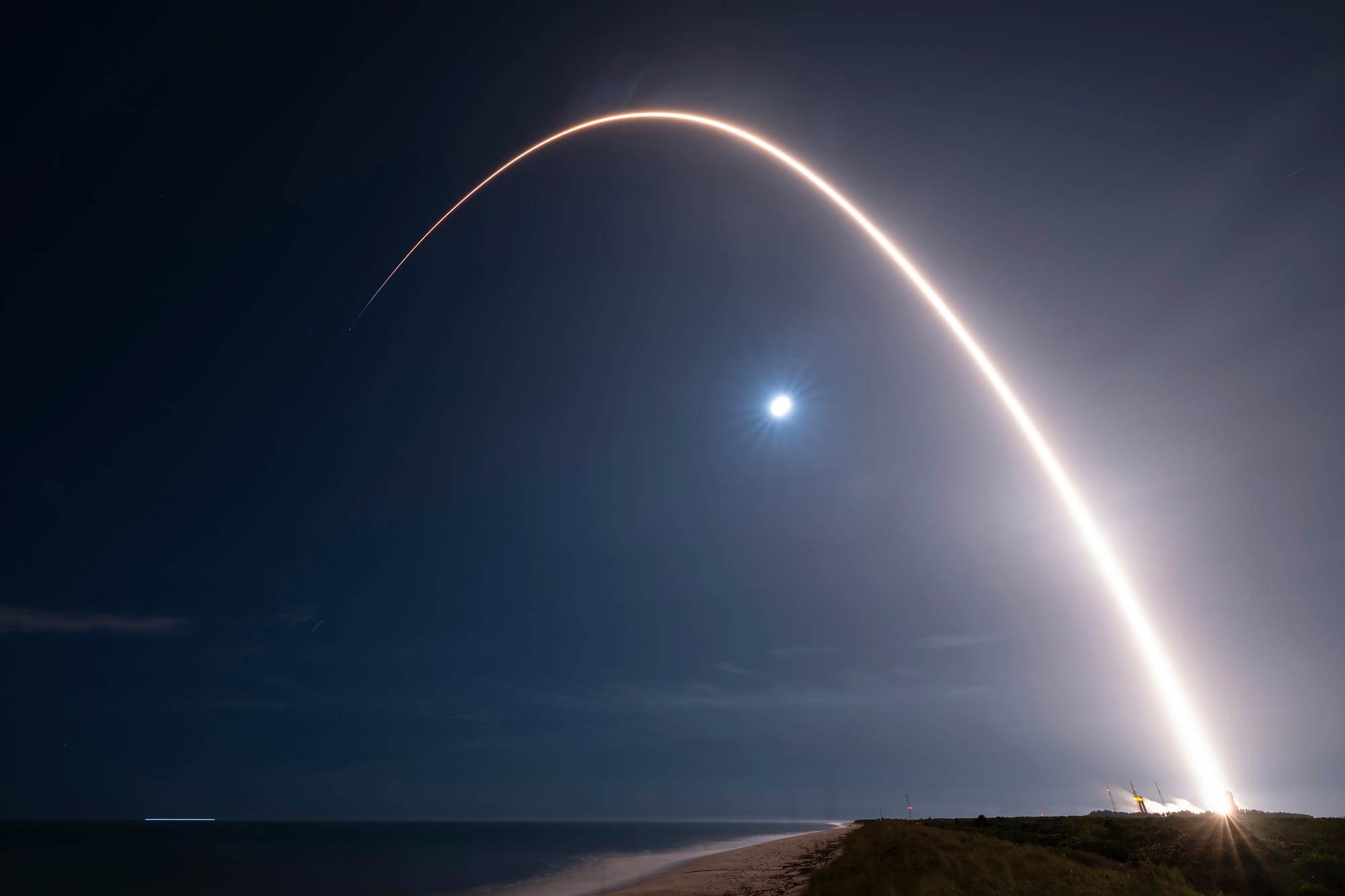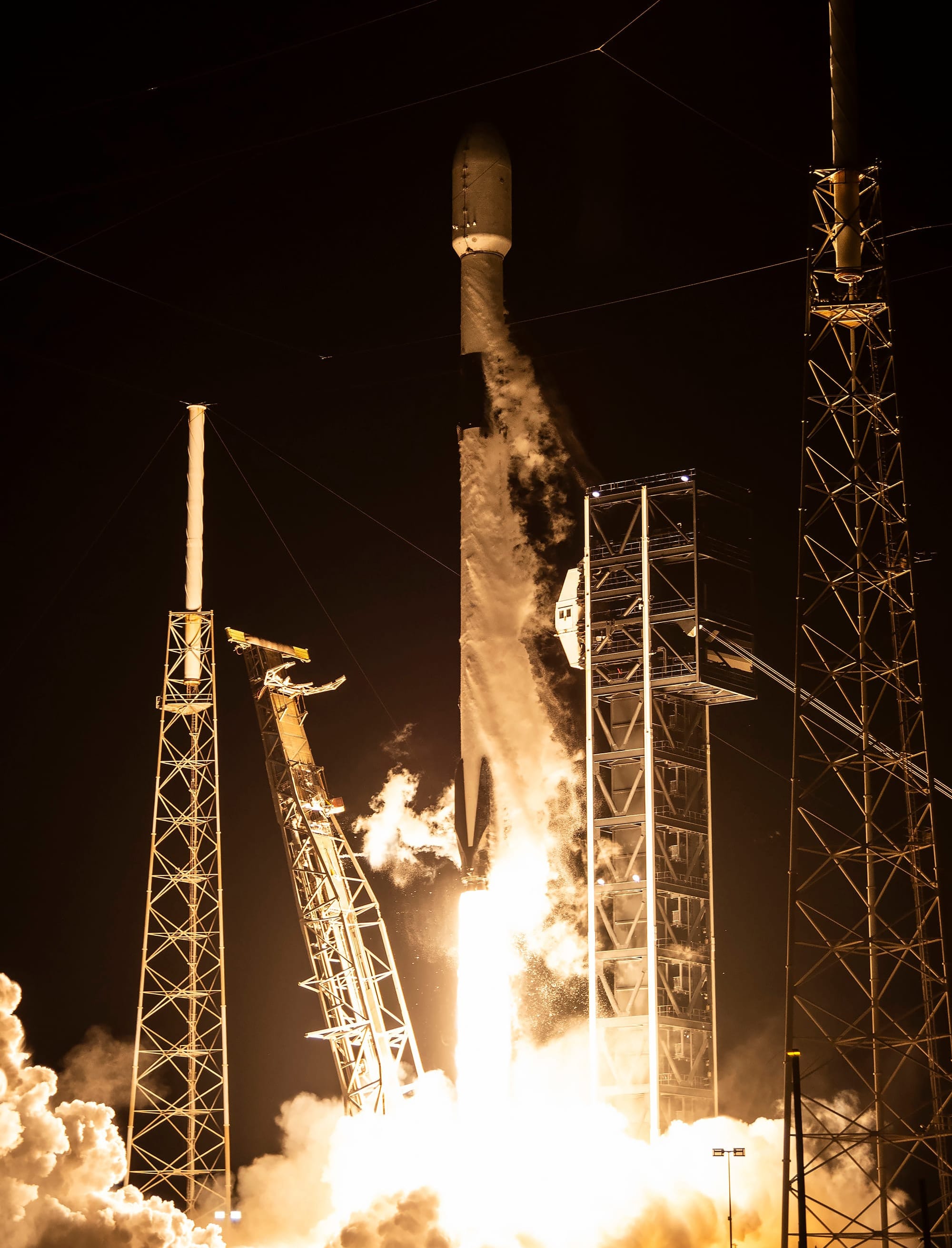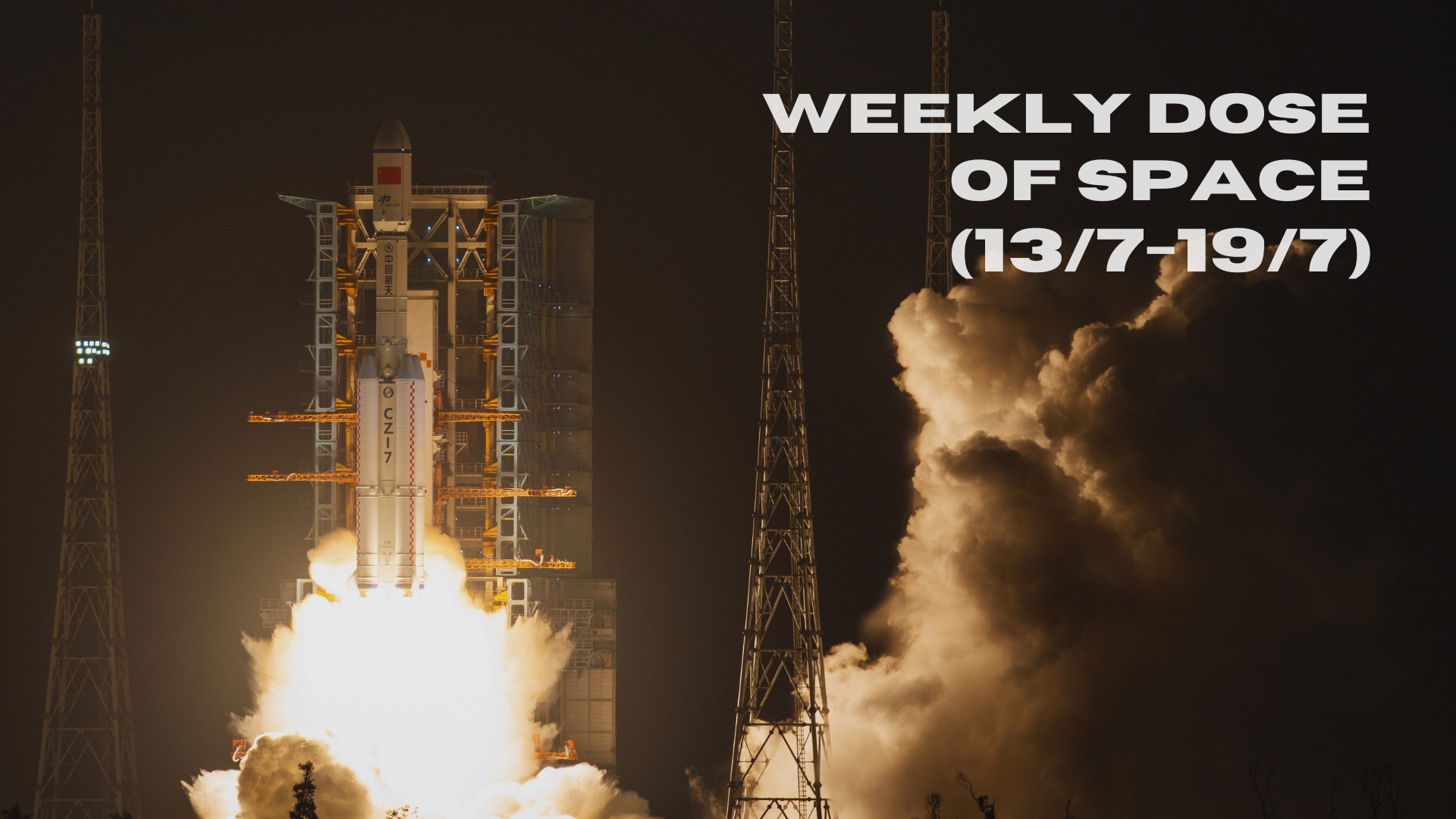Table of Contents
Welcome back to Weekly Dose of Space! This week had five launches occurring worldwide, the majority for internet mega-constellations. News from the week saw four astronauts returning to Earth, a new Acting Administrator for NASA, and continued possible budget perils. As always, we'll also look ahead to what the worldwide launch schedule might look like next week.
Launches This Week
July 13th - Falcon 9 with Dror-1
Heading to a geostationary transfer orbit, a Falcon 9 launched the Israel Aerospace Industries' Dror-1 communications satellite from Space Launch Complex 40, in Florida. Supporting this mission was booster B1083 for its thirteenth flight, with a landing downrange on the drone ship 'Just Read The Instructions'.
This was also Falcon 9's 500th mission.

July 14th - Long March 7 with Tianzhou-9
From Launch Complex 201 at the Wenchang Space Launch Site, a Long March 7 blasted off carrying the Tianzhou-9 cargo resupply spacecraft, heading for low Earth orbit and eventually the Tiangong Space Station (docking about three hours after launch). Onboard the spacecraft are scientific experiments, two new and improved Feitian spacesuits, along with food and other consumables. Propellant will also be transferred to the space station for its maneuvering and attitude control systems.
China has successfully launched its Tianzhou-9 supply ship, painting the sky with rocket clouds like a jellyfish as it delivers supplies to taikonauts! pic.twitter.com/gzVq9JUGjQ
— Mao Ning 毛宁 (@SpoxCHN_MaoNing) July 16, 2025
The Long March 7 during booster seperation and first-stage staging during its ascent into low Earth orbit, via Spokesperson Mao Ning on Twitter.
July 16th - Falcon 9 with Starlink Group 15-2
Twenty-six Starlink satellites headed to low Earth orbit atop of a Falcon 9 from Space Launch Complex 4E, in California. Booster B1093 supported this launch for its fourth flight, landing on the drone ship 'Of Course I Still Love You' downrange.
Deployment of 26 @Starlink satellites confirmed pic.twitter.com/I68Pa2PTIh
— SpaceX (@SpaceX) July 16, 2025
Deployment of twenty-six Starlink satellites from Falcon 9's second-stage, via SpaceX on Twitter.
July 16th - Falcon 9 with KF-01
A Falcon 9 launched from Space Launch Complex 40 headed for low Earth orbit, carrying twenty-four Kuiper satellites for Amazon, bringing the constellation up to seventy-eight satellites. In support of the mission was a brand new Falcon 9 booster, B1096, was performing its first flight, and landing in the Atlantic Ocean on the drone ship 'A Shortfall Of Gravitas'.

July 19th - Falcon 9 with Starlink Group 17-3
Another twenty-four Starlink satellites were delivered to low Earth orbit by a Falcon 9 flying from Space Launch Complex 4E. Booster B1082 supported the mission, for its fourteenth flight, along with a landing on the drone ship 'Of Course I Still Love You' downrange.
In Other Space News
Axiom-4 crew return to Earth
Dragon’s four main parachutes have deployed pic.twitter.com/oGfRfqCymB
— SpaceX (@SpaceX) July 15, 2025
Crew Dragon 'Grace' floating toward the ocean with its four parachutes deployed, via SpaceX on Twitter.
Since June 26th, the Axiom-4 crew, consisting of Peggy Whitson, Shubhanshu Shukla, Sławosz Uznański-Wiśniewski, and Tibor Kapu, were aboard the International Space Station for eighteen days, performing over sixty science experiments and returning astronauts to space for India, Poland, and Hungary after a decades-long gap. On July 14th, the four astronauts left the station inside Crew Dragon 'Grace'.
Following the undocking, Crew Dragon 'Grace' performed a series of burns to head to the East coast of America, eventually splashing down in the Pacific Ocean off the coast of California. After splashdown, Whitson, Shukla, Uznański-Wiśniewski, and Kapu were recovered by SpaceX personnel.
New Acting NASA Administrator appointed
Wrapping up my day at @NASA - spoke with the smart leaders of our mission directorates. We agree- America MUST dominate space and our critical moon mission, #ARTEMIS, must be as known & supported by America just as Apollo was! It's a race to the moon. Clock is ticking.
— NASA Acting Administrator Sean Duffy (@SecDuffyNASA) July 18, 2025
I'm fired… pic.twitter.com/QSqtNVy9lo
Sean Duffy at NASA, via his Acting NASA Administrator account on Twitter.
In a surprise move, Donald Trump announced on July 9th that he was appointing Sean Duffy, already Secretary of Transportation, as Interim Administrator of NASA. It's unknown why Trump chose Secretary Duffy to lead NASA for the foreseeable future, although part of the reason may be that he previously stood up to Elon Musk regarding air traffic controllers.
As someone the Senate has already approved of, Duffy may continue some of previous Acting Administrator Petro's work on behalf of Trump, albeit as a pre-established loyalist. As of writing, Duffy has not halted the bleeding of talent from NASA, pushed by Petro.
Around July 18th, Sean Duffy is believed to have made his first visit to NASA in his new role, stating the following via a new Twitter account:
"Wrapping up my day at NASA - spoke with the smart leaders of our mission directorates. We agree - America MUST dominate space and our critical moon mission, ARTEMIS, must be as known & supported by America just as Apollo was! It's a race to the moon. Clock is ticking. I'm fired up and ready to launch!"
That message does not sound like someone who is heading an ostensibly civilian space agency.
NASA funding still in peril?
U.S. politicians have moved to restore funding to NASA slashed by the Trump Administration through a series of bills signed, and awaiting to be, by the President. Funding restored is directed toward two more Artemis Moon missions using the Space Launch System rocket and the agency's broad science portfolio.
Although some of the funding being restored still has to go through the lengthy process of getting to the President's desk, and it needs to do so before a deadline of October 1st. If not passed in time, Ars Technica reports, officials from the Trump Administration intend to go with its intended cuts to NASA.
In support of NASA, sources told Ars, legislators have been signaling that they intend to prevent the cuts and are not supportive of them, especially in states with NASA activities. As such, American legislators are attempting to restore funding before the deadline.
What to Expect Next Week
July 21st - Falcon 9 with two O3b mPOWER satellites
SpaceX is planning to launch two O3b mPOWER communications satellites to a medium Earth orbit from Space Launch Complex 40.
July 22nd - Falcon 9 for multiple missions
A Falcon 9 is planned to lift off from Space Launch Complex 4E carrying NASA's TRACERS (Tandem Reconnection and Cusp Electrodynamics Reconnaissance Satellites), PExT (Polylingual Experimental Terminal), and Athena EPIC (Economical Payload Integration Cost) missions to sun-synchronous orbit alongside Dartmouth College's REAL (Realistic Electron Atmospheric Loss) mission.
July 24th - Falcon 9 with Starlink Group 10-26
Another batch of Starlink satellites is planned to head to low Earth orbit atop of a Falcon 9 from Space Launch Complex 40.
July 25th - Soyuz 2.1b with two Ionosfera-M satellites
Two Ionosfera-M ionospheric and magnetospheric research satellites are planned to launch to sun-synchronous orbit atop of a Soyuz 2.1b from the Vostochny Cosmodrome.
July 26th - Vega-C with CO3D & MicroCarb
A Vega-C is preparing to launch from the Guiana Space Centre carrying two missions to sun-synchronous orbit, CO3D for Earth observations and MicroCarb to map sources and sinks of carbon dioxide.
July 26th - Falcon 9 with Starlink Group 17-2
SpaceX intended to launch another batch of Starlink satellites to low Earth orbit via a Falcon 9 flying from Space Launch Complex 4E.
July 26th - Eris for its debut flight
Gilmour Space is planning to perform the debut flight of its Eris rocket from the Bowen Orbital Spaceport, in Australia.







